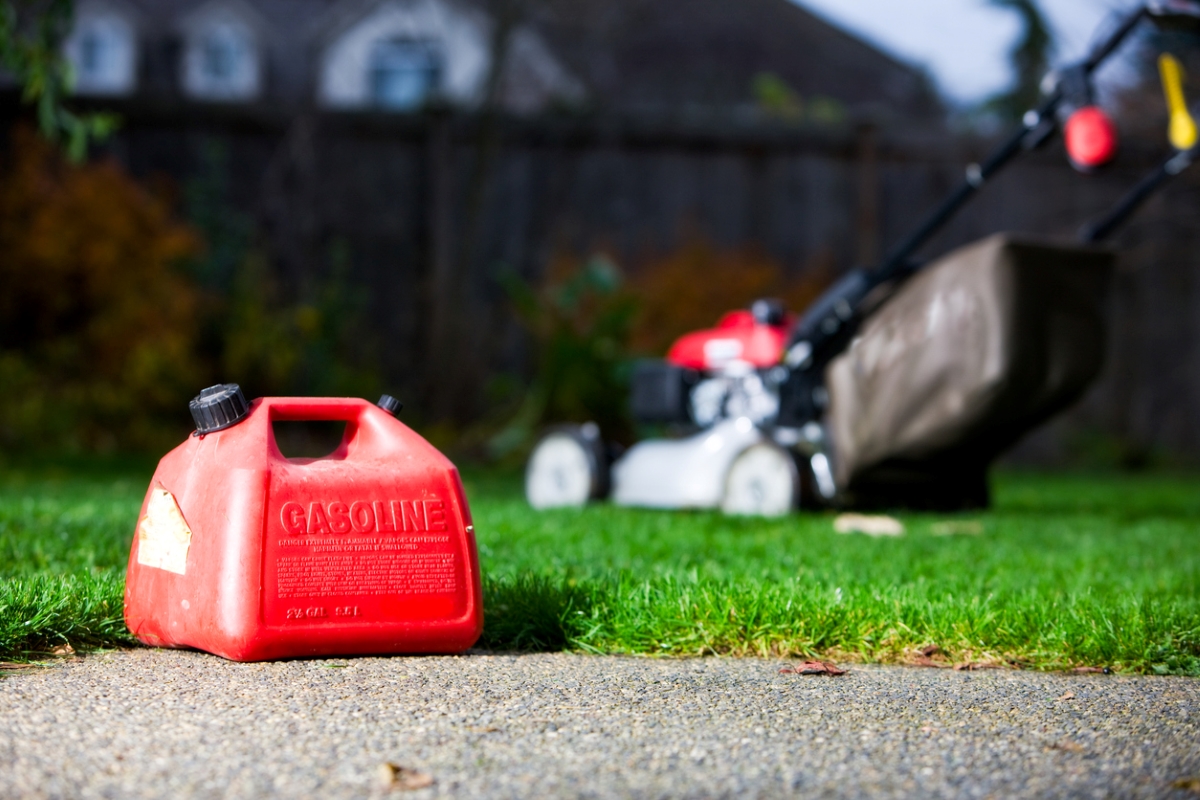We may earn revenue from the products available on this page and participate in affiliate programs. Learn More ›
Gasoline powers our vehicles, lawn mowers, and boats, our work and our play. But when gasoline sits too long, whether in the tank of your lawn mower or stashed in the garage, it degrades and loses its combustibility. If you try to use it, deposits and gummy residue in old gas can damage gas-powered equipment, leading to expensive repairs. Old gas may not even have enough oomph left to get an engine started.
When gasoline is too far gone, you need to get rid of it, and your options are limited. Because of its combustibility and toxicity, it can’t legally be thrown out with the trash or poured onto soil, and it can’t be dumped down the drain or into a storm drain, where it could end up in local waterways. While regulations vary from state to state, disposing of old gas usually involves either transporting it to a hazardous waste collection site, or figuring out how to use it up quickly. Ahead, learn how long gasoline lasts—and how to know if the gas you have is past its prime.
How long does gasoline last?
Pure gasoline has a lifespan of between 3 and 6 months, and ethanol gas, which breaks down faster, can last up to 3 months. (And remember, the gas you pump at the station may already be weeks old by the time you put it in your tank.) Over time, the hydrocarbons in gasoline react with the oxygen in the air to form gummy solids, and the lighter, more volatile components evaporate. These processes leave you with a thickened mixture that doesn’t burn as well. What’s more, more than 98 percent of the gas sold in the United States contains ethanol, a compound that reduces harmful emissions but also attracts moisture. This can cause gasoline to absorb water, especially if the gas is stored in a location where temperature fluctuations lead to condensation. Storage conditions, such as temperature and container quality, can also affect gasoline’s shelf life.
How can you tell if gas has gone bad?
Gasoline should be light in color, clear, and free of sediment and water, which tends to collect at the bottom of a poured sample. It should also smell like, well, gas. So if your gas is cloudy or dark, if it contains particles, or if it gives off a sour smell, it’s probably old. The easiest way to determine whether gas is old is to pour some of it into a clear container and compare it to a clear container filled with fresh gas.
Tools and Materials
The following are things that you might need for collecting and disposing of old gasoline, and cleaning up any spills you may have left behind. You will almost certainly not need all of these things to get rid of old gas.
Glass containers
Jerry can
Fuel additives
Siphon pump or turkey baster (optional)
Funnel
Cooler
Cat litter, sand, or commercial absorbent
Broom
Dustpan
White cloth
Baking soda
Household ammonia (optional)
Dish soap
Vinegar (optional)
Before You Begin
Work outdoors or in a well-ventilated space, and never use matches, lighters, or any other flame- or spark-producing tools while you’re working with gasoline.
Step 1: Determine whether the gas is contaminated or just old.
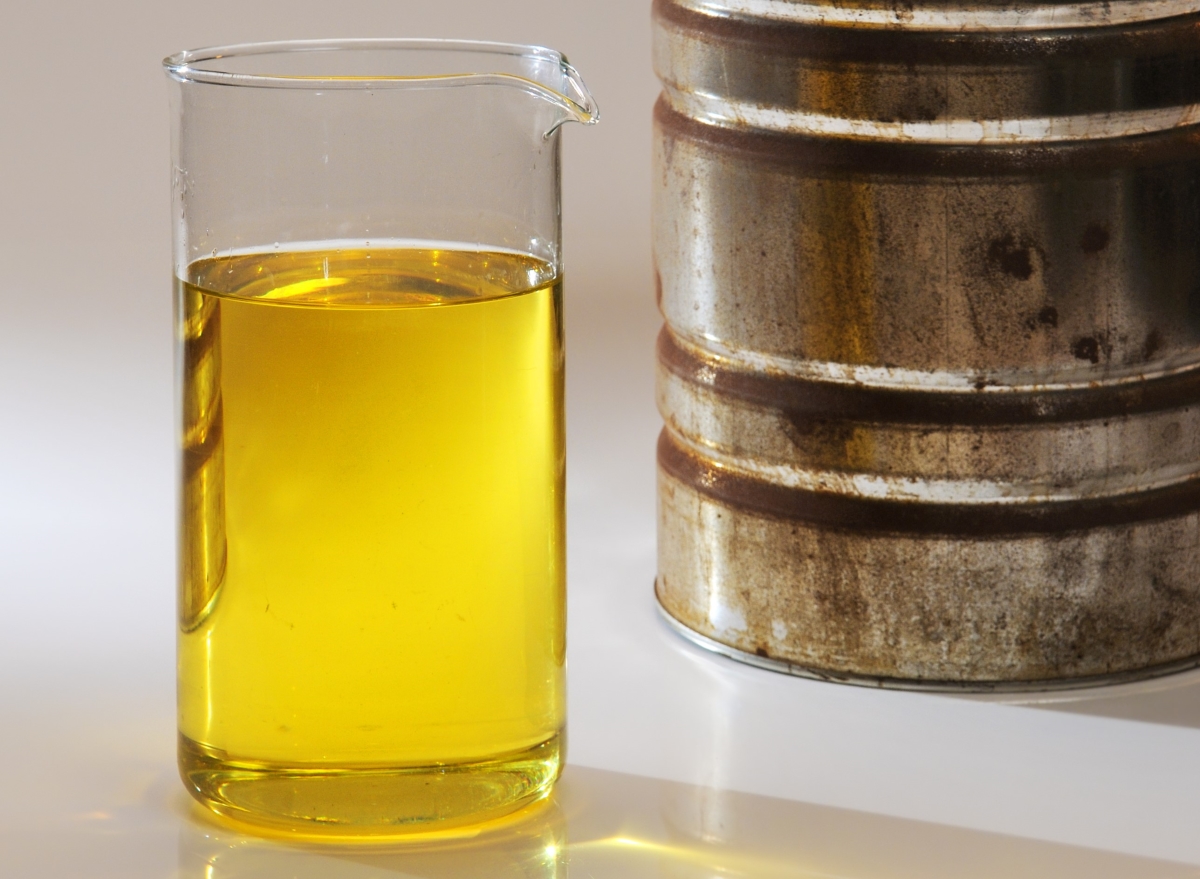
- Pour a little of the old gas into a clear glass container, and pour some fresh gasoline into another container for comparison.
- From a distance, take a tiny whiff of the samples. If the questionable gas smells sour in comparison with the fresh gas, it is probably past its prime.
- If the old gas is very dark or cloudy or has gummy deposits; if you see sediment, rust, or dirt; or if you see a layer of water at the bottom, the gas is probably contaminated and should be disposed of as described in Step 3.
- If the old gas is just a bit darker than the fresh gas, and you don’t see any particles or water, it’s probably just old and can be reused as described in Step 2.
Step 2: Use up old (but not contaminated) gas.
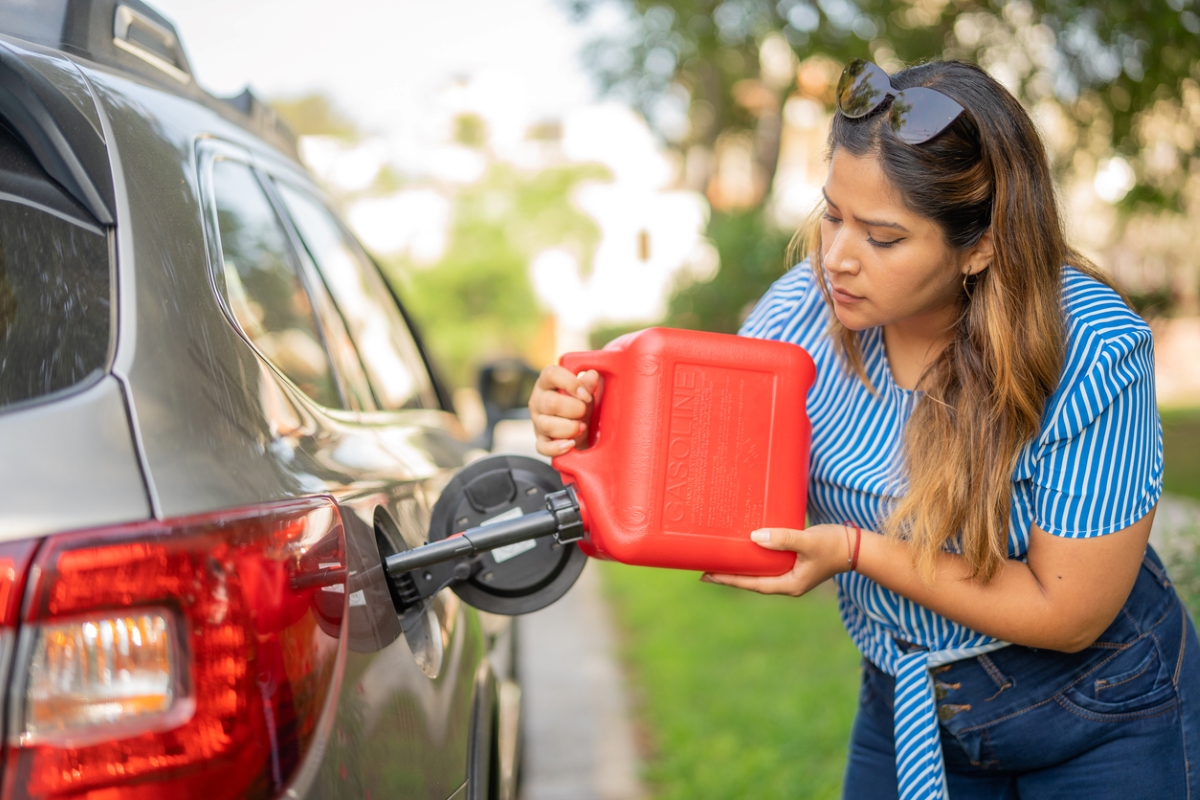
While old gas may no longer be able to fire an engine, it’s often fine to mix small amounts of it with fresh gas in the tank of a vehicle. In the right proportions in a large tank, the old gas won’t significantly affect combustibility or performance. But avoid doing this with lawn mowers and other non-fuel-injected, gas-powered tools. It may work, but it’s not recommended. According to Darryl Murray, owner of Liffco Power Equipment in New Hyde Park, New York, “The old gas will always settle to the bottom, and it sometimes has sediment and other contaminants in it, which will then clog up the unit upon restarting.”
The steps that follow explain how to use up old gas in a car’s fuel tank.
- Check your vehicle owner’s manual or look online for its tank capacity, which ranges roughly from 9 to 16 gallons.
- For small tanks: For a tank of 9 or 10 gallons that is at least 3⁄4 full, add a half-gallon of old gas to the tank. Stop when the tank is filled to just below the safety flap. For larger tanks: You can add ¾ gallon of old gas to a nearly full tank, or a full gallon to a 16-gallon tank.
- Fuel additives may allow you to use a slightly higher proportion of old gas so you can use it up more quickly. Fuel injector cleaners are often useful in getting rid of old gasoline, depending on the engine in question and the kind of fuel involved. Ask at your local auto supply shop for their recommendation. (The Drive’s review of the best fuel injector cleaners is a helpful resource.)
Step 3: Research local options for gasoline disposal.
If your gas is contaminated or if you choose not to reuse it, find out where to dispose of old gas in your area. Note that disposal facilities tend to have limited hours and may restrict the amount of gasoline they will accept, so confirm the basics before you head out. Here’s how to find disposal options near you.
- Search online for “hazardous waste disposal center” in your county, city, or state, or search Earth911 for a waste collection site near you.
- Call your county or city waste management agency for guidance.
- Check with your local fire department. Given gasoline’s flammability, these fire experts may have safe handling instructions and suggestions for how to dispose of old gasoline.
- Ask a local auto or power equipment repair shop to take the gasoline off your hands. Depending on your relationship with them, they might be willing to help, especially if you agree to pay the disposal fee.
Step 4: Make sure your gas is in a government-certified container.
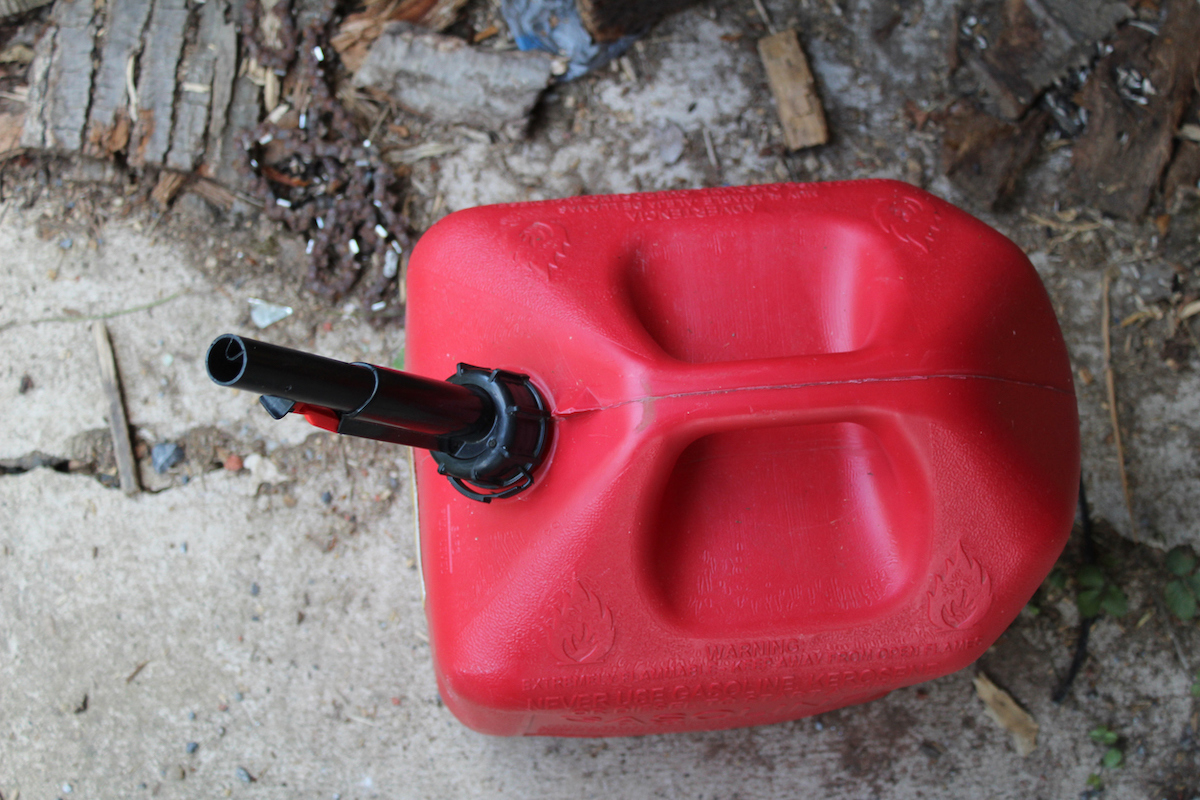
Collection sites generally only accept gas that is in a certified container, such as a jerry can or plastic gas can (if you don’t already have one, consult our researched guide to the best gas cans for some good options). Also, federal regulations require that portable fuel containers have a capacity of 5 gallons or less. Certified containers are available at home centers, automotive stores, and gas stations.
Before taking your gas to a drop-off site, check in advance to find out if the site will return the container to you. If not, transport the old gas in a container you’re willing to give up.
Step 5: Transfer the old gas to a certified container (optional).
If the gas is already in an approved container, you’re good to go. If it isn’t, here’s what you’ll need to do.
- If the old gas is still in the tank of a vehicle or gas-powered tool, drain it using a siphon pump (or even a turkey baster), and then pour it into a certified container.
- If you’re dealing with a lawn mower, you may be able to unclasp the fuel line to drain the gas. You may first need to drain the gas into a low plastic container and then, using a funnel, pour it into a government-certified container.
- If the old gas is in a non-certified container, use a funnel to transfer it into a government-certified one.
- Work slowly to avoid splashing, spilling, or generating static, and fill the container no more than 95 percent of the way to leave room for the gasoline fumes.
- Keep your face as far away from the spout as possible to minimize gas inhalation.
- After you’ve finished, tightly seal the container to prevent spills or leaks.
- If you’ll be driving the gas to a location for disposal, place the container upright in a second receptacle, such as a cooler or bin, to catch spills if it should topple over or leak.
- Wash your hands thoroughly.
Step 6: Clean up any spilled gasoline.
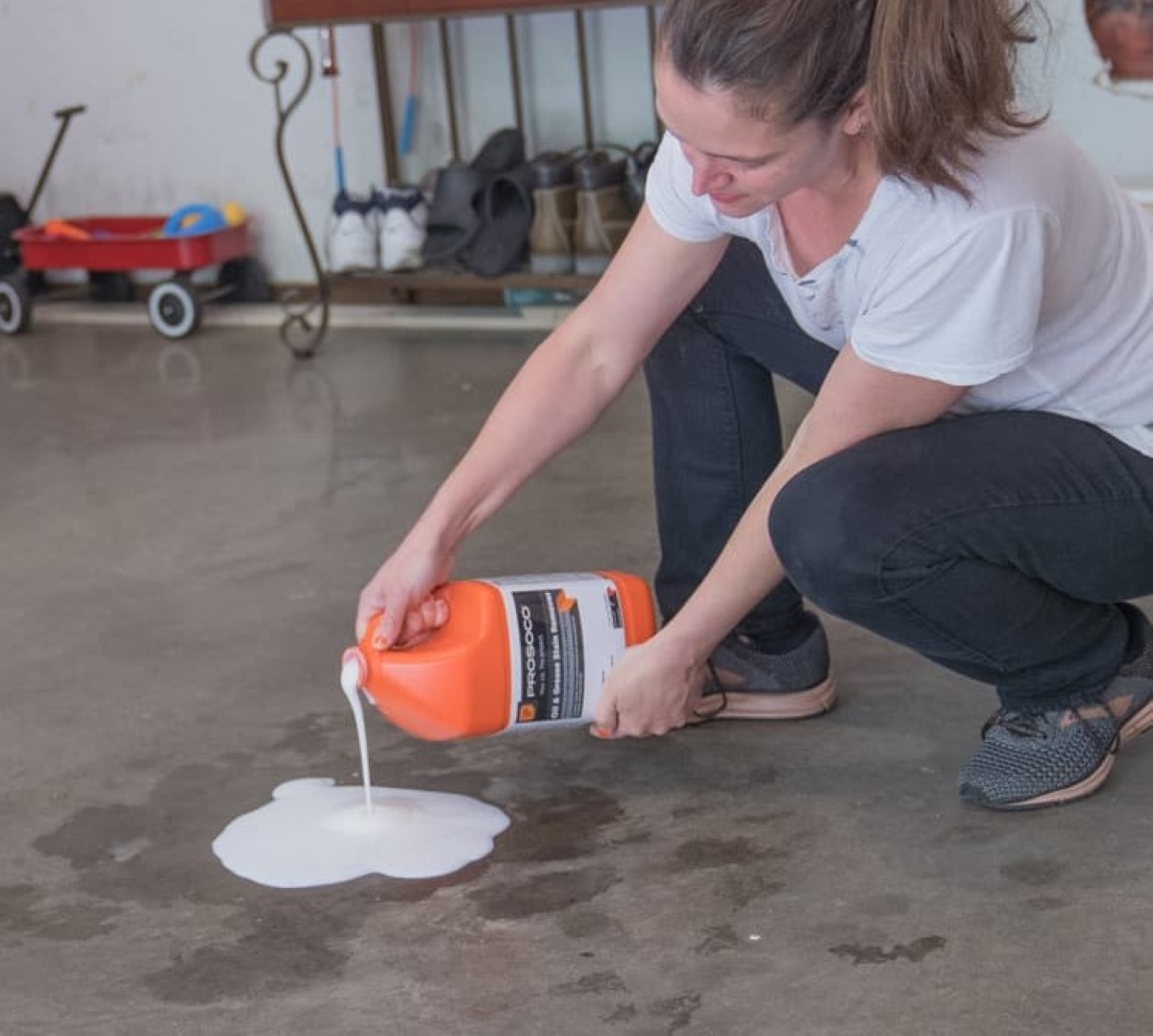
For spills on clothing:
- Change your clothes and address the stain and odor promptly.
- Blot off the excess gasoline off with a white cloth, and cover the affected area with baking soda to absorb remaining liquid.
- Let it sit for up to 24 hours, and then brush it clean.
- Cover the stain with stain remover or liquid dish soap and let it sit for about 10 minutes. Soak the clothing in warm water for 30 minutes, and then rinse.
- Optional: Fill the washing machine with warm water and 1 cup of household ammonia, and soak the clothing for a few hours.
- Rinse the garment and then wash it by hand using gentle detergent, rinse it again, and then line dry.
- Repeat the process if the stain persists. If there are no more stains, but the garment still smells of gasoline, try soaking it in vinegar and water.
Pro tip: If an article of clothing smells of gasoline, don’t put it in the dryer. Lingering gasoline can trigger combustion in a hot dryer.
For spills on concrete and other surfaces:
- To remove stains on concrete, soak up as much of the fuel as possible with absorbent material—try kitty litter, sand, a commercial oil-absorbing product, or powdered dishwasher detergent. Let it sit until the liquid is absorbed, working it into the spill as necessary.
- Sweep up the gasoline-soaked material, which, like the gasoline itself, should be disposed of as hazardous waste.
- Clean off any remaining stains. Depending on the composition of the surface, options include liquid dishwashing detergent, trisodium phosphate, or baking soda.
Step 7: Transport the gasoline to a disposal center.
While transporting gas, drive carefully and do not smoke in the vehicle. Fumes could be lingering or gas may have splashed on you, and with an open flame in a small space, it takes very little gasoline to combust.
At the collection center, you will either be able to empty your gasoline into their storage vessel or be required to leave your container. Check with the collection site ahead of time so you’ll be prepared.
How to Handle Old Gasoline Safely
Gasoline is highly toxic and flammable, so you must take precautions when transferring and disposing of it:
- Always work outdoors when handling gasoline because it’s dangerous when inhaled. If you notice a burning in your lungs as you’re working outdoors with gasoline, get indoors ASAP.
- Call poison control immediately at 1-800-222-1222 if you swallow gas by accident. Drink milk right away and await further instructions.
- If you get gasoline on your skin or in your eyes, flush with cool water for at least 15 minutes. Seek medical attention if the gas continues to bother you.
How to Make Stored Gas Last
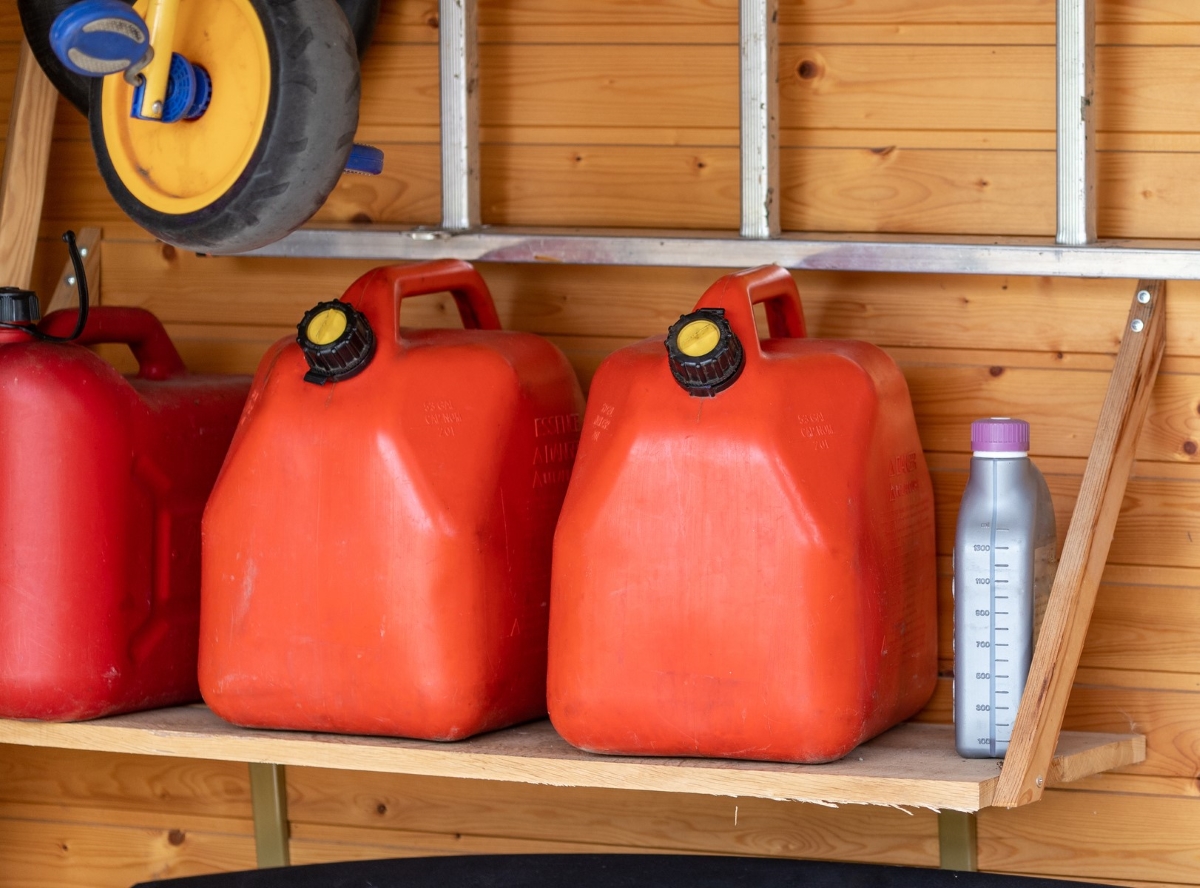
Stored gasoline degrades and separates quickly, but there are steps you can take to make the most of your gas.
- Store gas only in tightly closed, approved containers.
- Store gas in a cool, dry, well-ventilated location, away from heat sources and direct sunlight.
- To prevent condensation, do not expose stored gasoline to extreme temperature fluctuations, and don’t store it on a concrete floor.
- If you’re storing gas for use in a lawn mower or other gas-powered tool, James Taveras, commercial manager at Garden World garden center in Flushing, New York, recommends that you “buy a gallon at a time, and only buy it when you’re going to use it.”
- Take the guesswork out: When you fill a gas can, write the date on the can before you stow it away.
- Fuel stabilizers like Sta-Bil and Star Tron slow down the separation process and can stretch the life of gasoline to between 1 and 3 years. But these products work best when added to fresh gas. While they might slow down degradation in older gas, they won’t bring it back to life.

